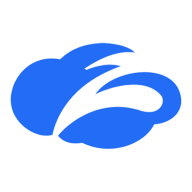


Zscaler Zero Trust Exchange Platform and Tenable Cloud Security compete in cybersecurity. Tenable is seen as having an advantage due to its robust feature set and comprehensive security insights compared to Zscaler's pricing and support strengths.
Features: Zscaler is noted for its secure access, seamless integration, and zero trust architecture. Tenable is distinguished by its comprehensive vulnerability management, asset discovery, and deep integration capabilities.
Room for Improvement: Zscaler could enhance its connectivity speed, user interface, and multi-factor authentication process. Tenable could improve its deployment process, customer service specialization, and cost-effectiveness strategies.
Ease of Deployment and Customer Service: Zscaler is appreciated for straightforward deployment and extensive support. Tenable is effective in deployment with a focus on specialized customer service, although both solutions offer ease of deployment.
Pricing and ROI: Zscaler provides competitive pricing with a focus on ROI through balanced cost and performance. Tenable, despite higher costs, offers a marked return on investment through advanced security features.
The detailed information PingSafe gives about how to fix vulnerabilities reduces the time spent on remediation by about 70 to 80 percent.
After implementing SentinelOne, it takes about five to seven minutes.
The solution has provided improvement in productivity and the time spent on issues.
We don't have to purchase many components such as load balancers and proxy servers that were necessary in traditional setups.
When we send an email, they respond quickly and proactively provide solutions.
They took direct responsibility for the system and could solve queries quickly.
Having a reliable team ready and willing to assist with any issues is essential.
Sometimes, support takes time since the solution has some bugs that need fixing.
I would rate it a 10 out of 10 for scalability.
Scalability is no longer a concern because Cloud Native Security is a fully cloud-based resource.
I would rate the scalability of PingSafe 10 out of 10.
Singularity Cloud Workload Security is significantly more stable than our previous solution.
Singularity Cloud Workload Security is more stable than our previous solution.
No lag, no crashing, no downtime.
If I had to ask for anything to make it easier, it would be signed images that are GPG signed and a public repository where we can get the bits from.
If they can merge Kubernetes Security with other modules related to Kubernetes, that would help us to get more modules in the current subscription.
As organizations move to the cloud, a cloud posture management tool that offers complete cloud visibility becomes crucial for maintaining compliance.
The only complaint I hear in the market is from resellers that Tenable management team in Brazil doesn't play fair with the channel and resellers.
They might be able to identify if something is missing with Zscaler.
Covering our 50,000 endpoints would have nearly bankrupted most security programs, even well-funded ones like ours.
I believe the enterprise version costs around $55 per user per year.
There are some tools that are double the cost of Cloud Native Security.
Our previous product took a lot of man hours to manage. Once we got Singularity Cloud Workload Security, it freed up our time to work on other tasks.
For example, we can set up an automation alert so that if a threat is detected on an endpoint, we can automatically take action on our Okta or AD environment, such as locking the account that was signed in or forcing a password reset.
This helps visualize potential attack paths and even suggests attack paths a malicious actor might take.
Perhaps the best functionalities are related to promoting a deeper analysis of the environment where applications are running in terms of creating a double armor of security to block threats that may come in the cloud with Tenable Cloud Security.
The best features Tenable Cloud Security offers in my experience are automatic scanning, frequent scanning, and automatic finding, which I find valuable.
The solution is cloud-based with the latest inspection engines, which I find to be amazing.
| Product | Market Share (%) |
|---|---|
| Tenable Cloud Security | 2.8% |
| Wiz | 23.8% |
| Prisma Cloud by Palo Alto Networks | 14.5% |
| Other | 58.9% |
| Product | Market Share (%) |
|---|---|
| Zscaler Zero Trust Exchange Platform | 17.4% |
| Prisma Access by Palo Alto Networks | 14.0% |
| Cato SASE Cloud Platform | 12.6% |
| Other | 56.0% |



| Company Size | Count |
|---|---|
| Small Business | 44 |
| Midsize Enterprise | 21 |
| Large Enterprise | 53 |
| Company Size | Count |
|---|---|
| Small Business | 5 |
| Midsize Enterprise | 2 |
| Large Enterprise | 4 |
| Company Size | Count |
|---|---|
| Small Business | 16 |
| Midsize Enterprise | 11 |
| Large Enterprise | 41 |
SentinelOne Singularity Cloud Security offers a streamlined approach to cloud security with intuitive operation and strong integration capabilities for heightened threat detection and remediation efficiency.
Singularity Cloud Security stands out for its real-time detection and response, effectively minimizing detection and remediation timelines. Its automated remediation integrates smoothly with third-party tools enhancing operational efficiency. The comprehensive console ensures visibility and support for forensic investigations. Seamless platform integration and robust support for innovation are notable advantages. Areas for development include improved search functionality, affordability, better firewall capabilities for remote users, stable agents, comprehensive reporting, and efficient third-party integrations. Clarity in the interface, responsive support, and real-time alerting need enhancement, with a call for more automation and customization. Better scalability and cost-effective integration without compromising capabilities are desired.
What are SentinelOne Singularity Cloud Security's standout features?SentinelOne Singularity Cloud Security is deployed in industries needing robust cloud security posture management, endpoint protection, and threat hunting. Utilized frequently across AWS and Azure, it assists in monitoring, threat detection, and maintaining compliance in diverse environments while providing real-time alerts and recommendations for proactive threat management.
Tenable Cloud Security is a comprehensive solution designed to help organizations secure their cloud environments across various platforms, including AWS, Azure, and Google Cloud. It offers continuous visibility, compliance management, and threat detection to ensure that cloud infrastructure and applications are protected from vulnerabilities and misconfigurations.
Tenable Cloud Security exemplifies a comprehensive Cloud-Native Application Protection Platform (CNAPP) by providing a unified solution that covers the entire cloud security lifecycle, from development to runtime. This platform is designed to address vulnerabilities, misconfigurations, threats, and compliance risks across multi-cloud environments, making it an essential tool for organizations adopting cloud-native architectures. In practice, Tenable Cloud Security integrates security into the development process through its shift-left approach, particularly with Infrastructure as Code (IaC) security. This ensures that security measures are embedded early in the development lifecycle, allowing teams to identify and mitigate vulnerabilities before they reach production. Once in production, the platform continues to provide real-time visibility into cloud environments, enabling continuous monitoring and proactive threat detection.
The solution's comprehensive protection spans various aspects of cloud security, including the identification and remediation of misconfigurations, automated compliance management, and advanced threat intelligence. By automating these processes, Tenable Cloud Security reduces the manual effort required to manage cloud security, freeing up resources for more strategic initiatives.
What are the key features of Tenable Cloud Security?
What are the benefits of using Tenable Cloud Security?
Tenable Cloud Security is particularly valuable in industries with stringent regulatory requirements, such as finance, healthcare, and retail. For example, in the financial sector, it helps organizations ensure compliance with regulations like PCI-DSS while safeguarding sensitive data across cloud environments.
In summary, Tenable Cloud Security is a robust CNAPP solution that integrates security throughout the cloud lifecycle, providing comprehensive protection and operational efficiency for cloud-native environments.
Zscaler Zero Trust Exchange Platform acts as a VPN alternative for secure remote access, cloud protection, and zero-trust strategies. It enables secure data transmission, supports remote work, and enhances compliance through a cloud-based architecture, offering improved performance and simplified management.
Designed for organizations seeking secure application access and robust data protection, Zscaler Zero Trust Exchange Platform delivers a comprehensive solution through seamless VPN connectivity, data loss prevention, and SSL inspection. Its cloud integration ensures scalability and reliability, while its interface provides intuitive management. Companies benefit from automatic secure access, minimizing constant authentication needs, and safeguarding sensitive data. The platform allows easy deployment and integration with diverse identity providers, granting granular control for access and application segmentation. Despite powerful capabilities, enhancements are needed in speed, bandwidth, and legacy support, with users noting interface and configuration challenges.
What are the key features of Zscaler Zero Trust Exchange Platform?
What benefits should companies look for in reviews when evaluating this platform?
In specific industries, Zscaler Zero Trust Exchange has been implemented to enhance security protocols in fields like finance and healthcare. By prioritizing data protection and compliance, it assists companies in safely managing sensitive information and meeting regulatory requirements. Organizations leverage its features to ensure secure operations across remote and cloud environments, adapting to industry-specific needs with customizable access and security controls.
We monitor all Cloud-Native Application Protection Platforms (CNAPP) reviews to prevent fraudulent reviews and keep review quality high. We do not post reviews by company employees or direct competitors. We validate each review for authenticity via cross-reference with LinkedIn, and personal follow-up with the reviewer when necessary.